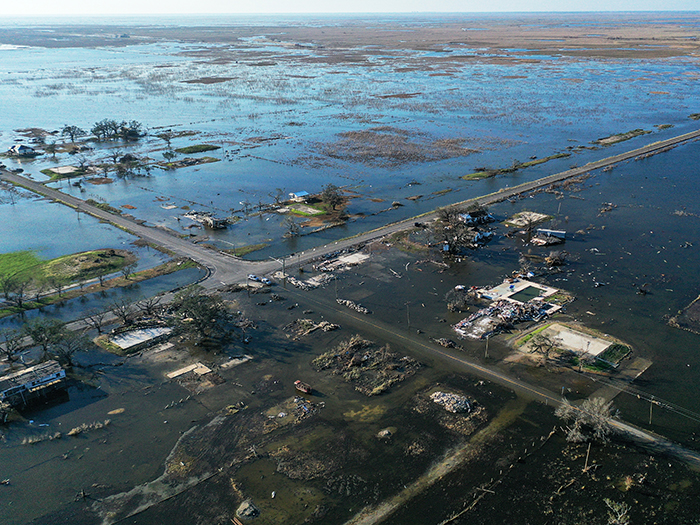Active Shooter Insurance: What a Former Casino Risk Manager Has to Say About Coverage, Employee Safety and More
From everyday office cubes to outdoor construction sites, approximately 2 million Americans each year are victims of a workplace violence incident, and those 2 million are only the incidents that get reported. Regardless of industry, the threat still exists.
Where workplace violence was once thought of as an employee-to-employee(s) incident, a new form of violence has transcended: third-party active shooters and active assailants. In 2018 alone, there were 27 active shooter incidents, 10 of which met the criteria cited in the federal definition of “mass killings,” that is, “three or more killings in a single incident.”
Where Incidents Can Happen
Historically, shooting incidents have been associated with educational institutions: colleges, universities and schools. But as we’ve seen in recent headlines, gun violence can happen anywhere.
Studies show that active shooter incidents are not limited to one particular industry or place.
The most recent data from the FBI shows that more than 40% of active shooter incidents occur in commerce-related environments.
The unpredictability and increase in gun violence now demands all employers take steps to be prepared. This task most often falls to the risk manager, who should look to add both emerging risk management best practices and insurance policies for this type of workplace violence.
After the tragedy at the Mandalay Bay Vegas resort in 2017, casinos were suddenly at the forefront of active shooter incidents. It made sense that hotels and entertainment venues were ideal targets for obvious reasons: access to a high volume of people and enclosed areas with restrictive maneuverability.
As the director of risk management for a Philadelphia casino at the time, my initial response was to look at our internal policies and procedures on workplace violence and active shooter and ensure that not only were they being effectively communicated but all of our employees were properly trained on how to react in those situations.
Understanding Active Shooter Insurance
As a result of increased gun violence in the workplace and other public areas, insurance policies are now better tailored to protect insureds.
A new form of coverage, active shooter insurance, covers the gray areas where general liability coverage does not. While related to the workplace violence coverage that has been around for many years, active shooter insurance includes common omissions such as acts of terrorism, vehicle and employee exclusions.
Active shooter insurance is an important and beneficial tool when incorporated into a big-picture approach at mitigating workplace violence.
These policies also include clear first-party and third-party coverage, such as death benefits, medical expenses, funeral costs and more.
The coverage focuses more on post-attack legal liabilities and potential business interruption issues, filling in any general liability gaps and sometimes offering a sublimit of a policy extension for property damage beyond the general liability policy.
Who and What Is Covered
Once an organization has decided to incorporate active shooter insurance, understanding the coverage is equally as important.
Policies can include expenses related to the actual act of violence, threats of/by stalkers, legal liability of the company, and some personal coverages for anyone who qualifies as an “Insured Person” under the policy.
Coverage can also include pre- and post-attack services such as counseling, crisis management, safety training and security.
When selecting the right coverage, insureds should be mindful of policies with vague language about what constitutes a “weapon” or “assailant” and exactly what types of violent events are covered.
Not universal in application, there are various organizational and physical components to consider when reviewing active shooter insurance.
Within a casino environment, there are several differentiating factors: alcohol consumption, spacious layouts and strategic design elements. Each of these areas carry a certain level of risk, which should correlate with the appropriate insurance plan.
As a risk manager of a casino, my focus was twofold: implementing risk control, insurance and safety programs to mitigate violent incidents, while also ensuring the appropriate insurance and contractual risk is transferred to the organization.
How to Be Prepared
But having the correct insurance policies in place is only part of it — training and precautionary measures are key to alleviating active shooter risks.
From a planning perspective, we found collaboration was key. While a casino design layout may not mimic a hotel floor plan, there’s a lot to be learned from past experiences, both positive and negative.
Speaking with safety and security professionals regarding best practices — such as having an outside security firm audit and test your policies, procedures and training to bring a fresh perspective on vulnerabilities we as an employer may not be aware of — is important to provide employees with the safest possible work environment.
The second piece is strong communication.
Employees expect transparency, and it helps everyone sleep better at night knowing that procedures are in place. For example, if an employee was let go, there were specific steps that followed. As an employer with hundreds of employees, we knew updating our safety procedures with consistent check-in protocols and safety drills were a necessity.
Lastly, clear and specific emergency response plans, such as evacuation and or shelter procedures, allow employees to be confident should an incident arise and minimize injuries.
These plans should be updated regularly as best practices change.
For example, the now outdated “run and hide” active shooter survival protocol has now been replaced with “run, hide, fight.” While taking these measures requires time, effort, and cost money, we saw a big increase in employee’s confidence in regards to workplace safety.
Top Takeaways
While most organizations will never have to experience a mass casualty, it’s better to be over-prepared than caught off guard. Regardless of industry, size or location, it’s important for employers to understand the risks of active shooter events and how they can best prepare.
Insurance coverage will continue to change alongside current events, as providers and insureds communicate to determine the best way to keep workplaces safe and secure.
When used in conjunction with workplace safety procedures, active shooter insurance is an important and beneficial tool when incorporated into a big-picture approach at mitigating workplace violence. &











